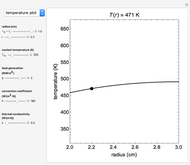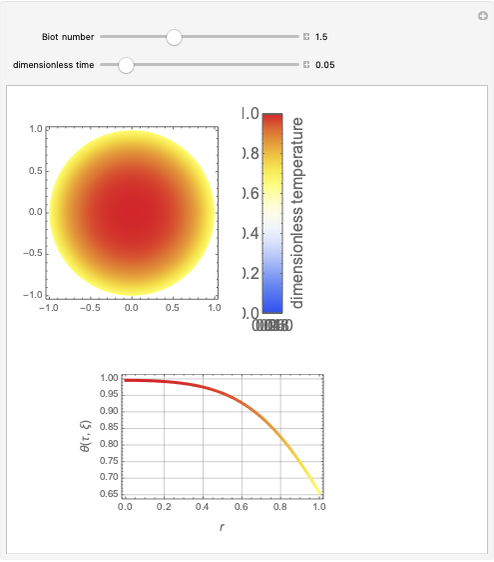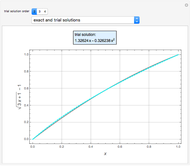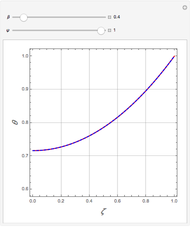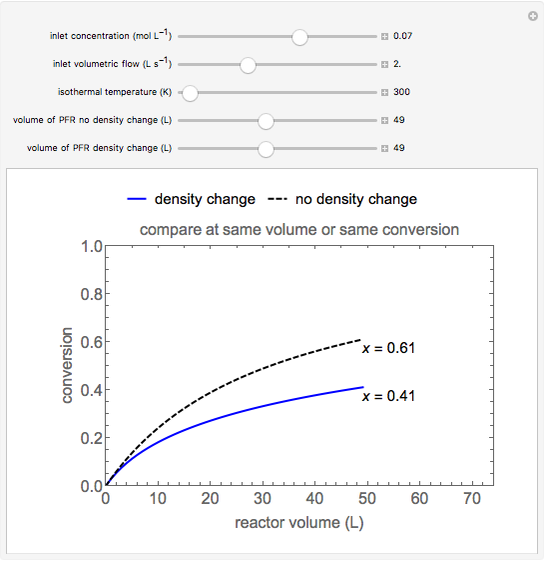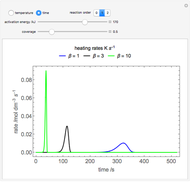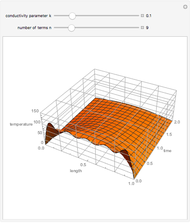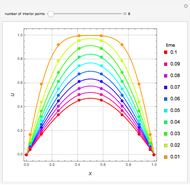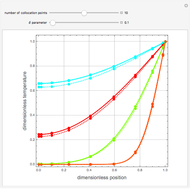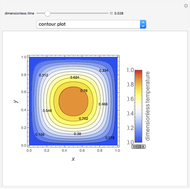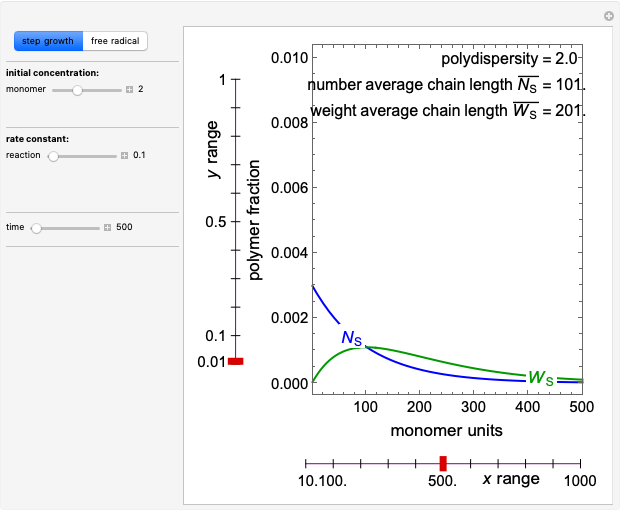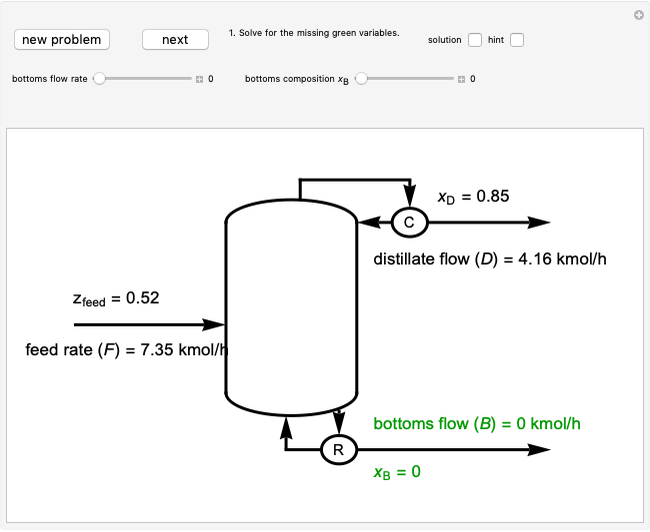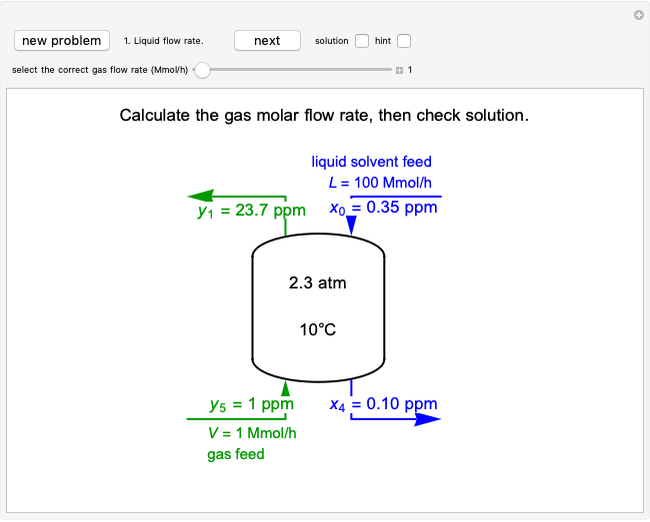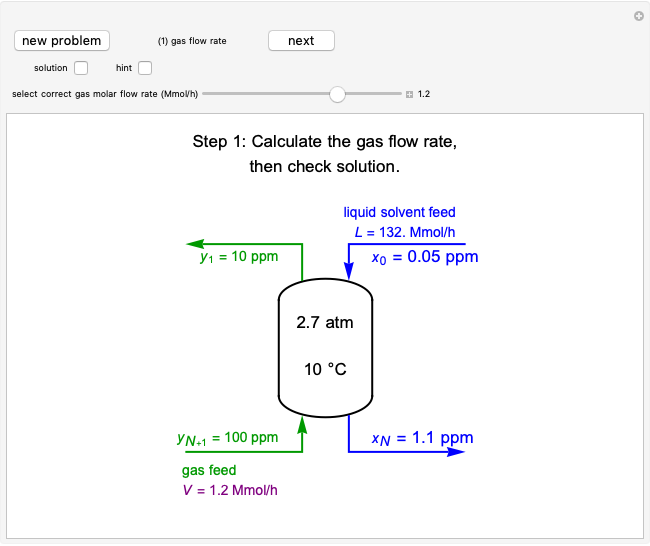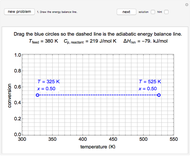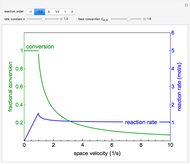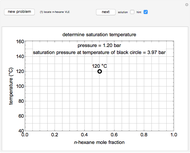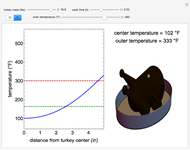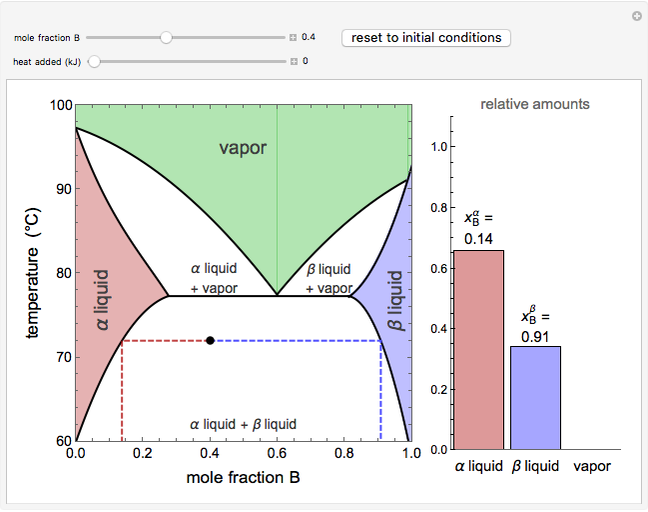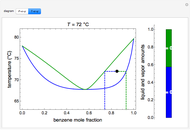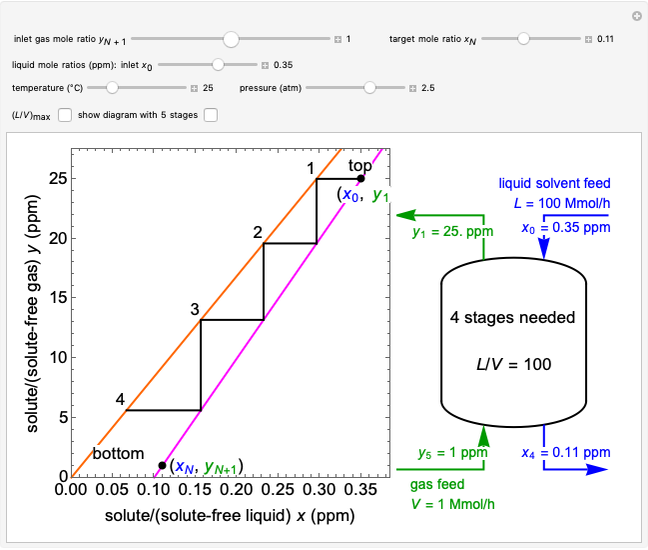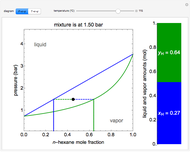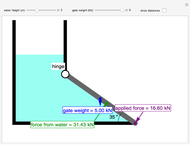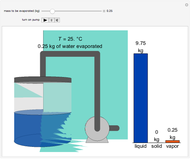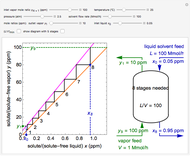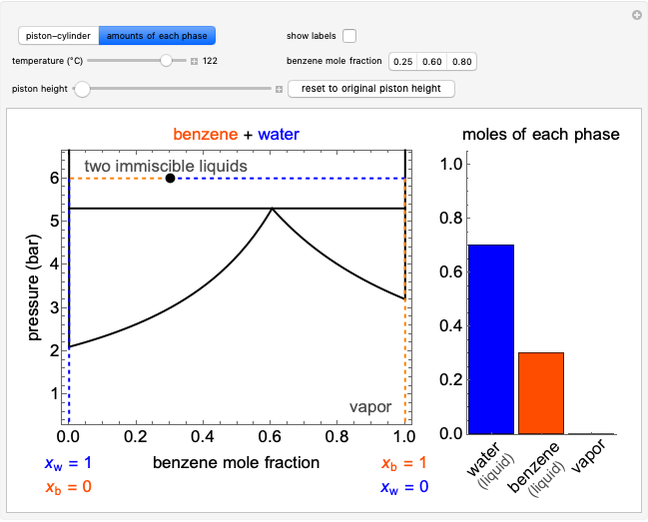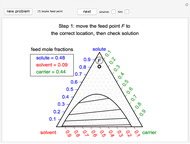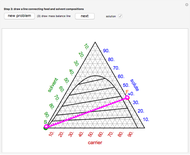Transient Conduction through a Plane Wall

Requires a Wolfram Notebook System
Interact on desktop, mobile and cloud with the free Wolfram Player or other Wolfram Language products.
A plane wall of thickness  is initially at uniform temperature. At time
is initially at uniform temperature. At time  , its surface is exposed to a liquid at a different temperature. The centerline temperature (at
, its surface is exposed to a liquid at a different temperature. The centerline temperature (at  ) is plotted as a function of time on the left, and the temperature distribution as a function of location is plotted on the right; it varies in time.
) is plotted as a function of time on the left, and the temperature distribution as a function of location is plotted on the right; it varies in time.
Contributed by: Rachel Saker and Rachael L. Baumann (February 2017)
Additional contributions by: John L. Falconer
(University of Colorado Boulder, Department of Chemical and Biological Engineering)
Open content licensed under CC BY-NC-SA
Snapshots
Details
Lumped capacitance is a quick method for determining the temperature within an object, such as the plane wall considered here. This method assumes a uniform temperature at any point within the solid (regardless of proximity to the surface) and therefore is only reliable for Biot number  . The Biot number is
. The Biot number is
 ,
,
where  is the convective heat transfer coefficient (
is the convective heat transfer coefficient ( ),
),  is the thermal conductivity (
is the thermal conductivity ( ) of the material, and
) of the material, and  is the cross-sectional length of the wall (m). The lumped capacitance method, which assumes a uniform temperature distribution through the wall, is only a function of the wall thickness
is the cross-sectional length of the wall (m). The lumped capacitance method, which assumes a uniform temperature distribution through the wall, is only a function of the wall thickness  and not a function of position within the wall. The temperature as a function of time is calculated using the lumped capacitance method from the ratio of the temperature differences:
and not a function of position within the wall. The temperature as a function of time is calculated using the lumped capacitance method from the ratio of the temperature differences:
 ,
,
 ,
,
where  is temperature (K), the subscripts
is temperature (K), the subscripts  and
and  denote the initial and ambient temperatures, and
denote the initial and ambient temperatures, and  is the Fourier number (dimensionless):
is the Fourier number (dimensionless):
 ,
,
 ,
,
where  is thermal diffusivity (
is thermal diffusivity ( ),
),  is time (
is time ( ),
),  is density (
is density ( ) and
) and  is heat capacity (
is heat capacity ( ).
).
When  , uniform temperature in the solid is not a valid assumption, and thus the lumped capacitance method is not accurate. Instead, the one-term approximation models the temperature distribution with better accuracy, and is valid for
, uniform temperature in the solid is not a valid assumption, and thus the lumped capacitance method is not accurate. Instead, the one-term approximation models the temperature distribution with better accuracy, and is valid for  :
:
 ,
,
 ,
,
where  is the position within the solid (
is the position within the solid ( ),
),  is dimensionless, and
is dimensionless, and  and
and  are constants that can be found in Table 5.1 on p. 301 of [1].
are constants that can be found in Table 5.1 on p. 301 of [1].
Reference
[1] T. L. Bergman, A. S. Lavine, F. P. Incropera and D. P. DeWitt, Introduction to Heat Transfer, 6th ed., Hoboken, NJ: John Wiley and Sons, 2011.
Permanent Citation






